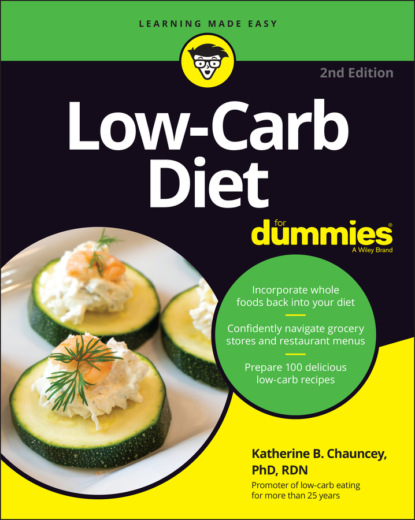One way is to talk with your healthcare provider about the plan I outline in this book. But before you do, consider reading this chapter to get your low-carb ducks in a row. You’ll likely be a step ahead when you actually do talk to your provider, because they’ll probably want you to complete some version of this assessment.
What’s Your Story? Assessing Your Personal Health Risks
People metabolize carbohydrates in different ways. Some carbohydrates are beneficial to your health and others can actually be harmful to your health, depending on your own health history. Before you make a change in your diet, you need to take a look at yourself, your family, and your lifestyle.
Grab a pencil to record the information on your history or open your Notes app on your phone.
Playing detective: Uncovering your family medical history
What kinds of diseases or health problems are in your family? Did Grandma have diabetes? Did Uncle Joe have a heart attack in his forties? Is Uncle Joe Grandma’s brother? And, how about Mom and Dad? Are they in good health? If you’re like most people, you probably go through life not really thinking about how your family members’ health affects you — but I’m here to tell you it does.
Your family’s health is part of your own personal health history. That’s why your healthcare provider asks you to fill out pages and pages of questions about others in your family (and you thought it was just to keep you occupied while you were waiting to finally get in to see the doctor). Your own health destiny rests, at least in part, in your genes. The sooner you know what you face, the better.
After you’ve collected all the information you can find on your first-degree relatives, move on to your extended family. Your extended family includes grandparents, aunts, uncles, and cousins. If possible, trace your family history back at least three or four generations.
www.ama-assn.org) and type “Family History Form” into the search. You can fill out the form online and then print it for your records. You can also email it to family members for their input.
However you gather the information, keep it up to date and share it with your healthcare provider and family. After gathering information on your family’s health, share it with your provider. Especially tell them if you discover two first-degree relatives with the same cancer or one first-degree relative younger than the age of 50 with an illness usually associated with older people, such as cancer or heart disease.
Figuring out how your age is affecting your health
When it comes to your health, you have control over many, many factors. But one factor you can’t control is your age. And as you age, you face increased risk of developing certain diseases. So read on to determine what role your age is playing in your health.
If you get a group of 25-year-olds together, chances are you’ll have a very healthy group of people. If you get that same group together 35 years later when they’re 60 years old, you’ll have a very diverse group in terms of their health status. As people age, they reap the benefits or destruction of their lifestyle, genetics, and exposure. Everyone wants to live long, healthy lives. But that doesn’t start at 60 — it starts when you’re young. If you’re older than 25, don’t worry: A healthy lifestyle can start today.
SMOKING AND YOUR HEALTH
If you’re a smoker, quitting smoking is the most important step you can take to improve your health. Smoking increases your risk of lung cancer, throat cancer, emphysema, heart disease, high blood pressure, ulcers, gum disease, and other conditions. Smoking can cause coughing, poor athletic ability, and sore throats. It can also cause face wrinkles, stained teeth, and dull skin.
Remember: It’s never too late to quit smoking. Save your money, prolong your life, and quit today. Some people fear the weight gain that sometimes comes with quitting smoking, but it’s usually no more than 5 pounds and is easily remedied. The smoking is far worse than the weight gain. Your healthcare provider can help you decide which smoking cessation method will work best for you.
Younger adults
You fall into this age bracket if you’re a man between the ages of 20 and 35 or a woman between the ages of 20 and 45.
Heart disease is rare in this age bracket except in those individuals with severe risk factors, such as a genetic tendency for high cholesterol or high triglycerides, high blood pressure, or diabetes. Heavy smoking (more than a pack a day) can also be a significant risk factor (see the nearby sidebar for more on smoking’s impact on your health). Even though heart disease is rare in young adults, atherosclerosis (hardening of the arteries) is in its early stages in this age bracket and may progress rapidly. Long-term studies show that high blood cholesterol in young adulthood predicts a higher rate of premature heart disease in middle age.
Middle-aged adults
You fall into this age bracket if you’re a man between the ages of 35 and 65 or a woman
